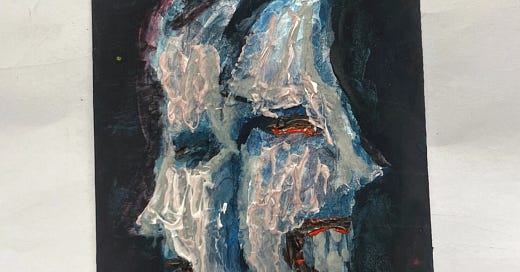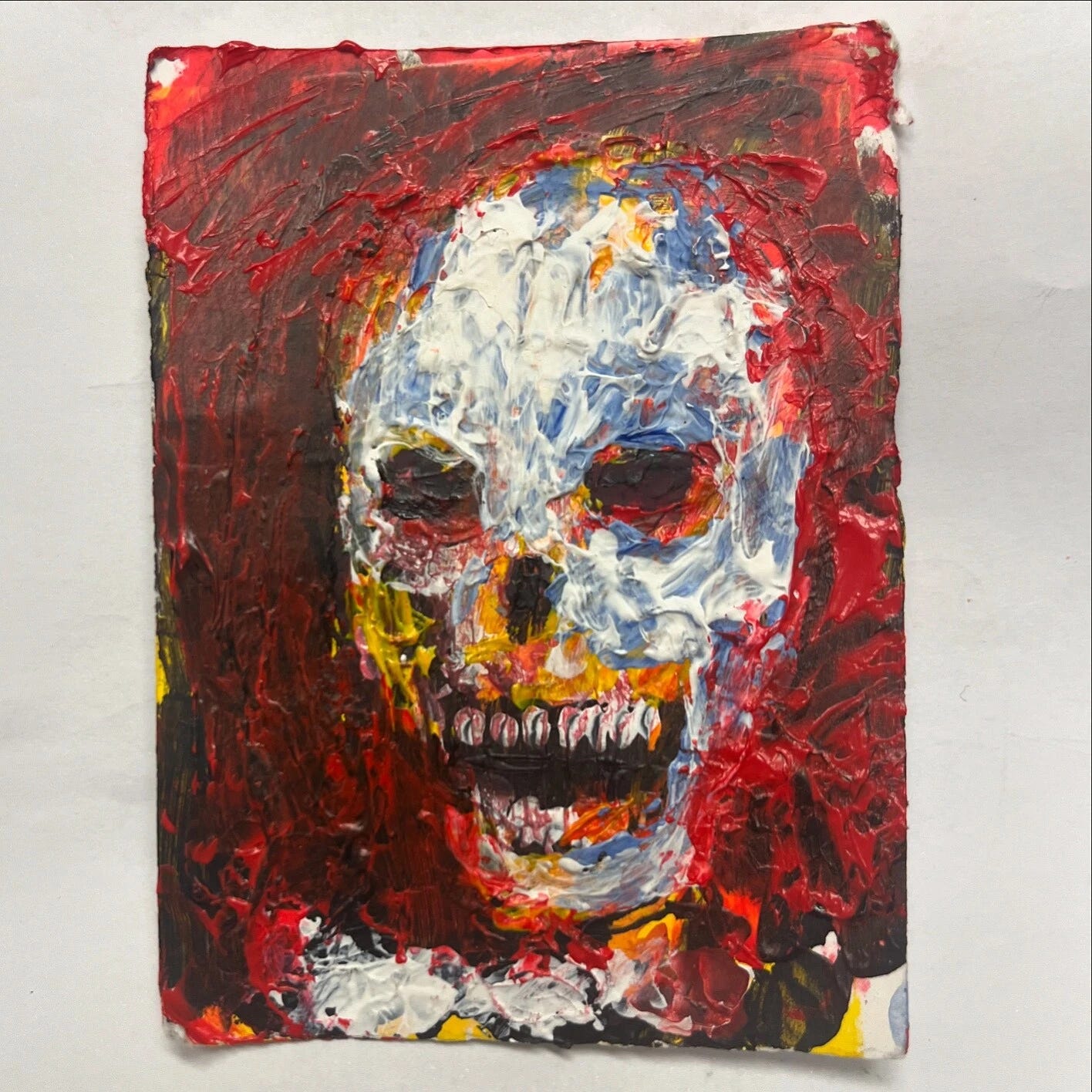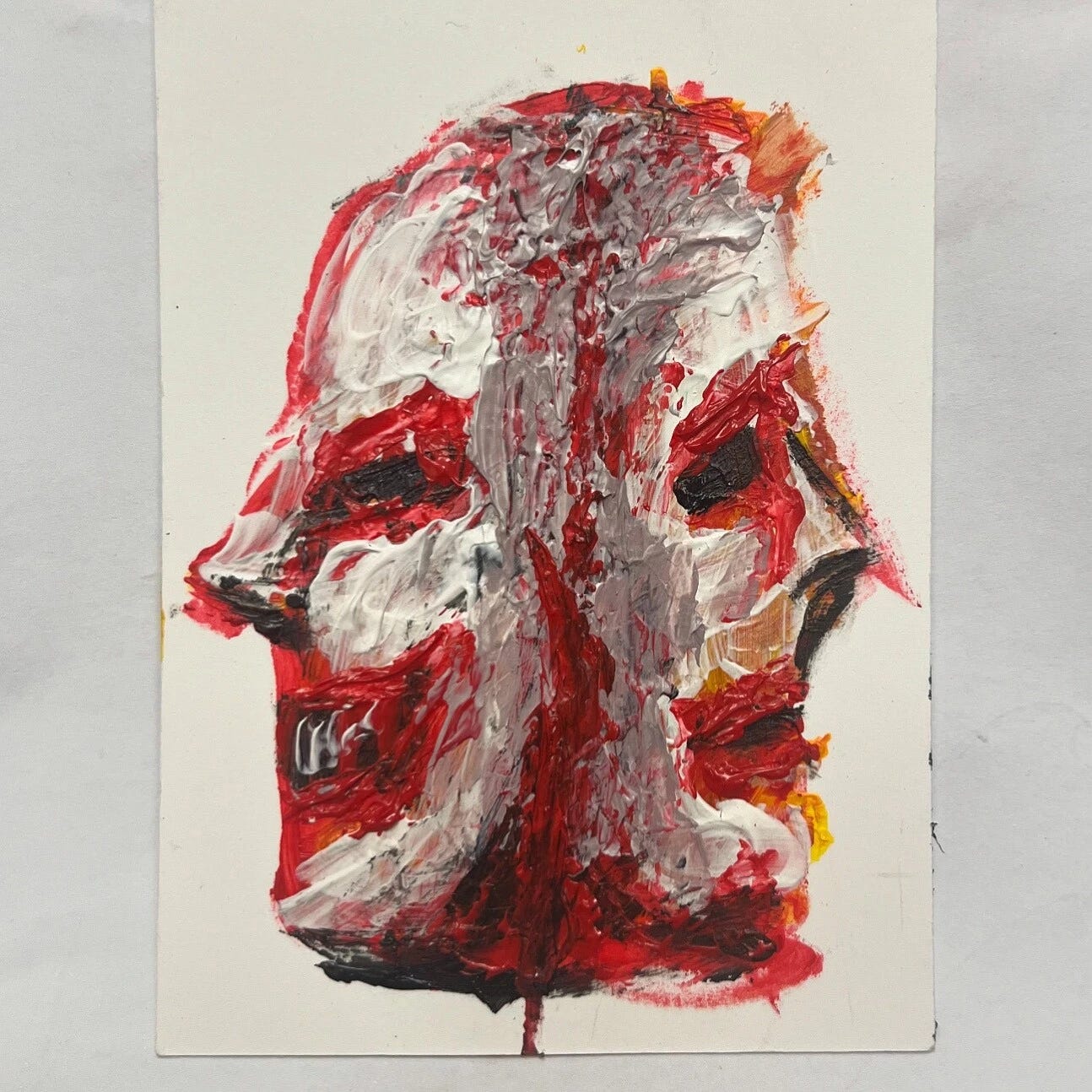Let’s review the three acrylic paintings by Tim Ozman, each 2.5" x 3.5" on Bristol board. These small-scale works appear to explore abstract and expressive themes, focusing on distorted, emotive faces with a raw, textured style.
First Painting: This piece features two overlapping profiles facing opposite directions, rendered in cool tones of blue and white against a dark background. The faces are heavily textured, with thick, impasto-like brushstrokes creating a sense of depth and movement. The red accents around the mouths and eyes add intensity, suggesting raw emotion—perhaps anger or anguish. The composition feels haunting, with the mirrored faces possibly symbolizing duality or inner conflict. The use of color and texture is striking for such a small piece, though the dark background can make the details feel a bit muddy in areas.
Second Painting: Here, the artist uses a warmer palette dominated by reds and yellows, with a single, distorted face in the center. The face appears almost skeletal, with exaggerated features—wide eyes, a gaping mouth, and jagged teeth—giving it a nightmarish quality. The thick, layered application of paint creates a visceral texture, as if the face is melting or decaying. The red background amplifies the sense of unease, while the white and yellow highlights add contrast. This painting feels more direct and aggressive than the first, effectively conveying a sense of horror or torment, though the small size slightly limits the impact of finer details.
Third Painting: This piece returns to a more complex composition, with a single face that seems split or fragmented, using a mix of red, white, and blue tones similar to the first painting but with more vibrant contrast. The face is highly abstract, with one side appearing more defined and the other dissolving into chaotic brushstrokes. The red and yellow accents around the eyes and mouth again evoke a sense of raw emotion, while the textured application of paint gives the piece a tactile, almost sculptural quality. The fragmentation of the face could symbolize a fractured identity or emotional turmoil. This painting feels the most dynamic of the three, though the small scale makes some of the finer textures harder to appreciate fully.
Overall: Tim Ozman’s use of acrylic on Bristol board is effective for creating bold, expressive works despite the tiny 2.5" x 3.5" format. The thick, textured brushstrokes and stark color contrasts—especially the recurring use of red to highlight emotional intensity—give the paintings a raw, visceral energy. The themes of duality, torment, and fractured identity come through clearly, though the small size sometimes limits the clarity of finer details. These pieces would likely have an even stronger impact if scaled up slightly to allow the textures and emotions to breathe. For such a compact format, however, they pack a powerful punch.






